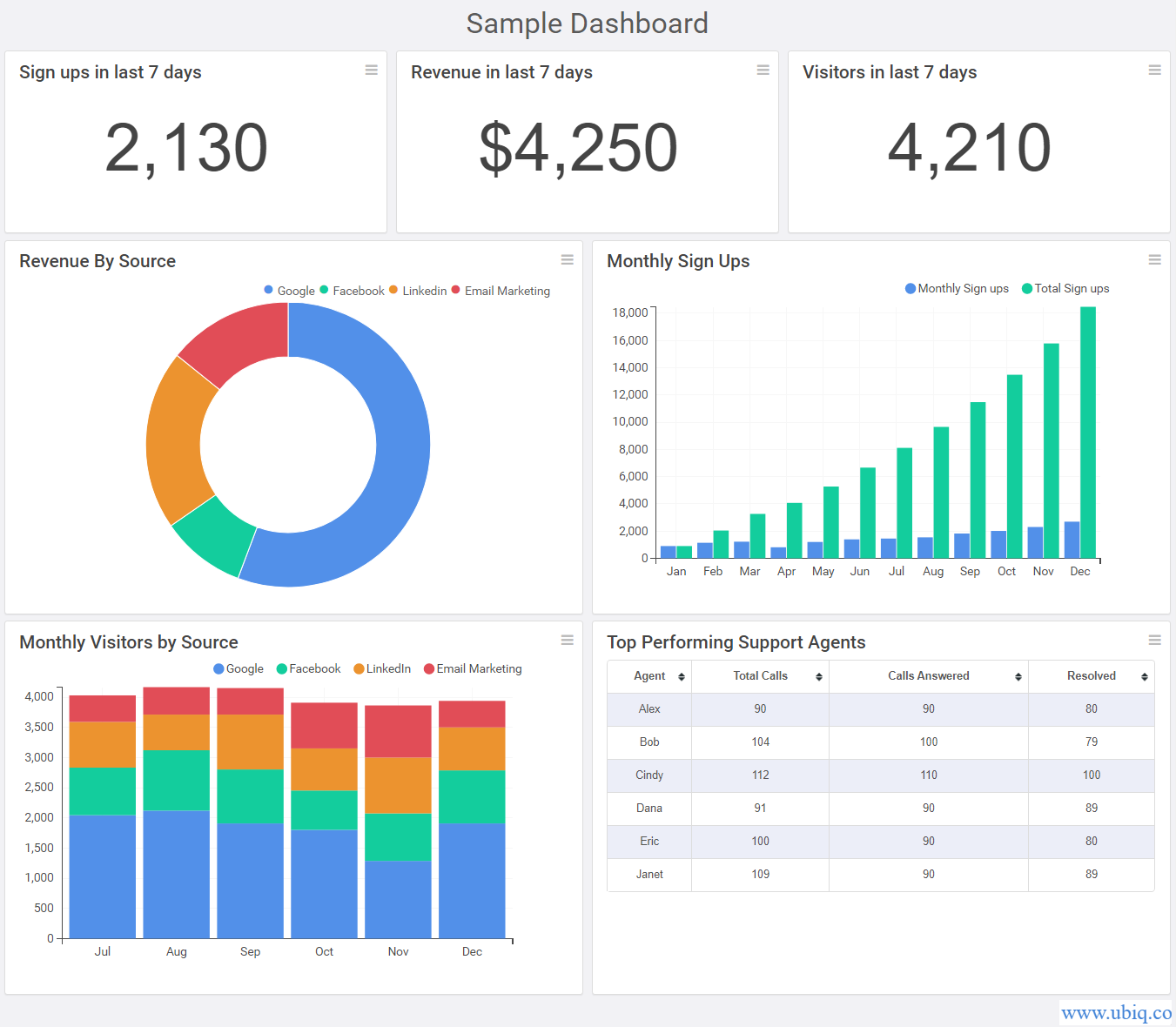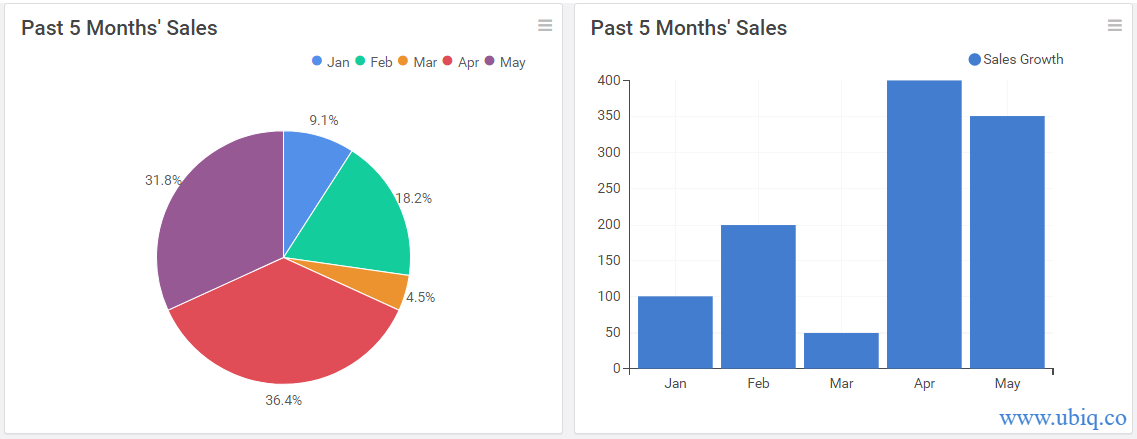Dashboards give at-a-glance status about your business and help you make better decisions faster. There are some things to keep in mind when you create a dashboard for your business. Otherwise, it can cause a lot of rework for you down the line. Here are the steps to build a dashboard for your business that you can use to make your own dynamic dashboard and share insights with your team
How to Create a Dashboard for Your Business
Here’s how to create a dashboard for your business, as well as clients.
1. Gather Dashboard Requirements
When you create a dashboard for your business, the most important step is to clearly gather reporting requirements for your dashboards. If you don’t know the requirements clearly, you may end up delivering dashboards that your target audience doesn’t use.
So identify the end users and key stakeholders for your dashboard and setup 2-3 rounds of meetings to identify the dashboard requirements. Find out
- Who will use your dashboard? What is their role? Are they executives, managers, analysts?
- What information are they looking for in your dashboard?
- How will your dashboard help them?
- Do they currently use a dashboard/report? Ask for a copy for your reference.
- If so, what are its shortcomings?
Make a list of all the people who will use your dashboard, along with the metrics & KPIs that each role/user group wants to see. If there are many divergent metrics, you may need to create separate dashboards for each user group.
Bonus Read : What to Include in Executive Dashboard
2. Identify Data Sources
You won’t be able to show the desired metrics & KPIs on your dashboard, if you don’t have the data for it. So organize your metrics & KPIs into 3 groups
- Metrics which can be directly reported from available data
- Metrics which can be derived from existing data using some data processing
- Metrics which cannot be reported at all, due to lack of available data
Inform your end users & stakeholders about metrics & KPIs which cannot be reported upfront, to avoid problems later. If they help you procure data for it, well and good. Otherwise, revise the requirements
At this point, create a simple list of all the different dashboards you need to create along, with the target audience and data sources for each dashboard. Get a written sign off about these reporting requirements, from the stakeholders & decisions makers, via email. This will help you avoid unnecessary iterations when you create a dashboard for your business.
Bonus Read : Key Website Performance Metrics
3. Design Dashboard Mock up
Design dashboard mock ups to display all the required metrics & KPIs. Here are some dashboard design tips to keep in mind create dashboard for your business.
- Don’t show more than 10-15 metrics & KPIs (also called widgets) per dashboard. Else it will become cluttered
- There are 3 types of business dashboards. Pick the one that suites your target audience.
- If you have more than 15 metrics to be displayed, push them onto an auxiliary dashboard
- Organize the dashboard metrics into 3 layers
- The most important & urgent summaries at the top
- All trends, comparisons and distributions in the middle
- All tables and granular data at the bottom
- Use descriptive titles for each dashboard widget. This will make it easier for users to understand what each chart/table/number is about.
- Place similar metrics near each other. This will help users compare information easily and draw insights quickly. Here’s an example of dashboard created using Ubiq

- Choose the right data visualization for each metric. Which of the following chart is suitable for showing sales trend?
 The sales trend is obvious in a bar chart
The sales trend is obvious in a bar chart - Use very few colors but use them consistently throughout your dashboard. Otherwise, it will distract your users.
- Mention any assumptions and caveats as footnotes in your dashboard
Again you may need to have 2-3 meetings with your target audience to get their feedback and update your dashboard design.
Here too, get a written sign off via email about your dashboard mock ups, to freeze all the designs.
Bonus Read : Top Ecommerce KPIs and Metrics To Track
4. Evaluate Dashboard Software
It can be tedious to create dashboard mock ups as well as actual dashboard from scratch. So pick a dashboard software to do the heavy lifting.
There are a few self-service dashboard reporting tools that allow you to easily create dashboard for your business, using a drag & drop interface.
They offer tons of data visualization tools to quickly visualize any metric. They also allow you to share live dashboards with your team as well as export your dashboard as PDF or Image.
Creating a dashboard is an iterative process and a dashboard reporting software can certainly help you cut the time and effort.
Even after you create a dashboard for your business, there will be multiple change requests and design changes, which can be easily handled using a reporting tool, with its out-of-the-box features.
Bonus Read : Top Call Center KPIs & Metrics
5. Educate Your Audience
After you create a dashboard for your business, it is essential to tell your audience how to view your dashboard.
Send an email or share a presentation that lists all the metrics on your dashboard, along with a one-line description about each metric.
This will make it easy for your users to understand your dashboard, and prevent unnecessary follow up questions.
Hopefully, the above tips will help you create a dashboard for your business, and enable faster decision-making. If you want to create business dashboards, reports & charts, you can try Ubiq. We offer a 14-day free trial!
Sreeram Sreenivasan is the Founder of Ubiq. He has helped many Fortune 500 companies in the areas of BI & software development.